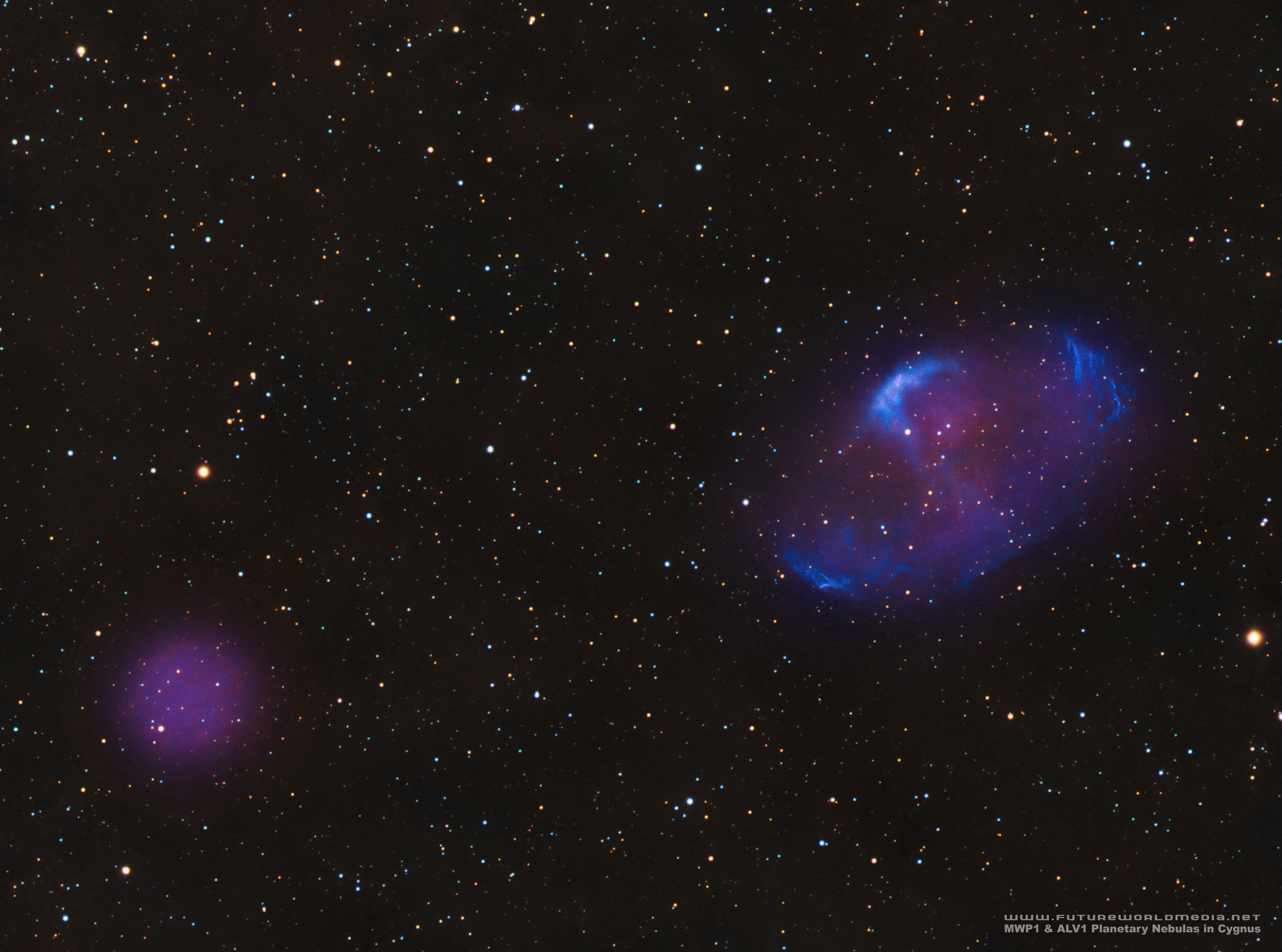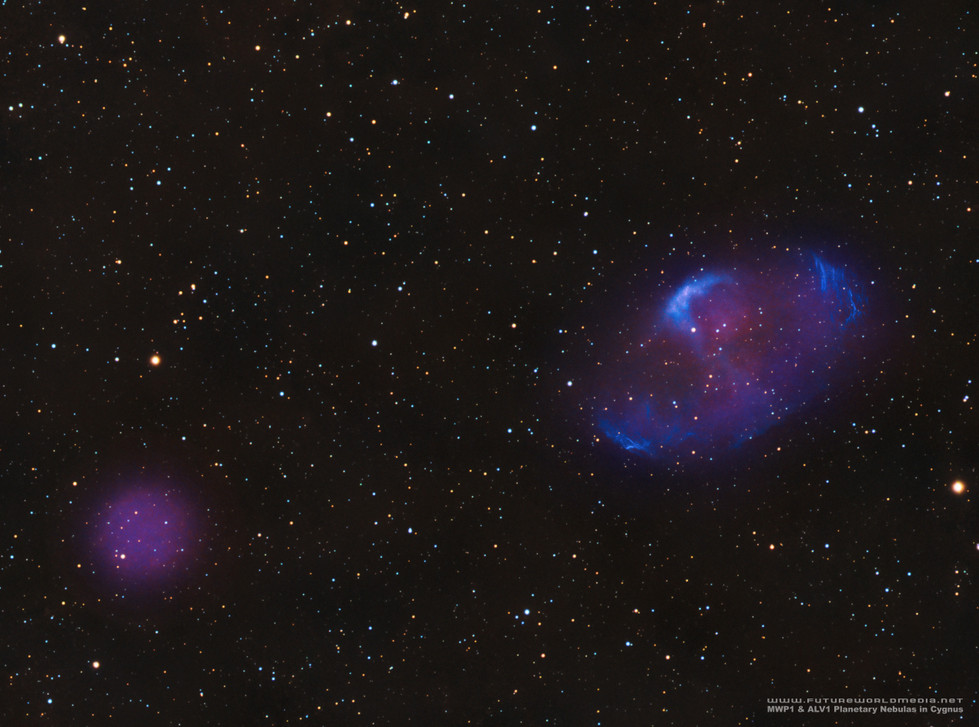Stellar Shot of the Week: September 25, 2020
"MWP1 & ALV1 Planetary Nebulae" - by Douglas Struble
Doug is a prolific imager and a fan of the more obscure targets like many of us here at Stellarvue. This image delivers not one but TWO such objects, and to such a degree that we had to look up what catalogs these were from. For those of you in a similar spot that would be "Motch-Werner-Pakull" (MWP) and "Alves" (ALV) catalogs, plus it would seem that the larger nebula here (MWP1) is sometimes called "The Methuselah Nebula" as well. According to Doug, "MWP1 has a lot of detail in it as long as you are patient in acquiring a lot of integration time for a moderately sped APO; especially in the OIII." Doug has been using an SV102T-R for many years now, but whether its our scope or one of his others there is no doubt about the quality of Doug's work. We definitely recommend you check out his full portfolio on Astrobin, and give him a follow to stay up to date on all of his new projects.
"Here you can see one of the few fields in the sky that shows two planetary nebulae together. It consists of a large old and developed planetary nebula and a smaller round very weak planetary nebula. The duo shown here is called PK 080-10.1 (MWP 1) and PN G79.8-10.2 (Alv 1). Alv 1 is located in the lower left quadrant of the image. The large and older planetary nebula, PK 080-10.1, was just discovered in the 90s of the last century by Motch, Werner and Pakull (hence the name MWP). When they examined a weak X-ray source in the swan. The X-ray source turned out to be the central star of a planetary nebula. The central star is not a normal white dwarf, but a pulsating star of the type GW Vir. GW Vir stars pulsate with periods of less than one hour through non-radial gravity waves." (Full text available at https://www.astrobin.com/azq1al/)
- Integration Time: 50.2hr
- Bortle Scale: 8.00
- Completion Date: 9-27-20
- Location: Taylor, MI (EST)
- Imaging Telescope: #Stellarvue #SVX102T-R
- Camera: #ZWO #ASI1600MM-C
- Filters: #Astrodon Ha & OIII and #Astronomik Deep-Sky RGB
- Software: SGP, PHD2, #PixInsight & #Photoshop


